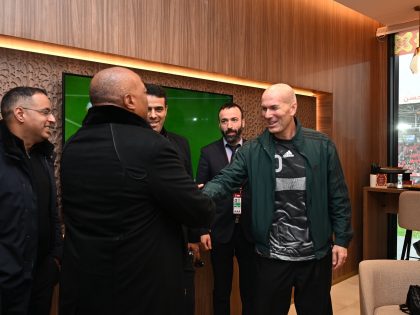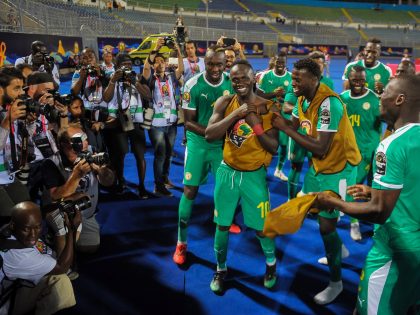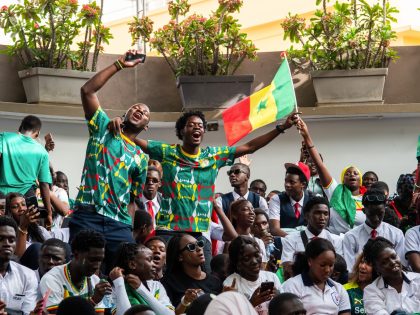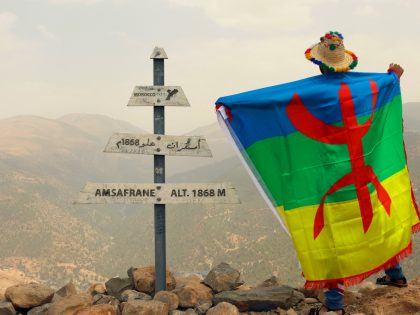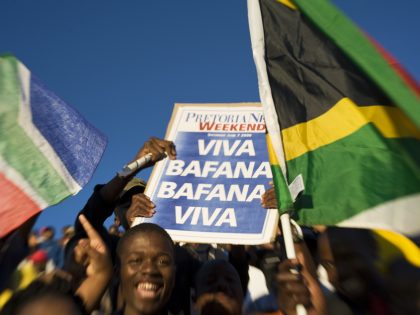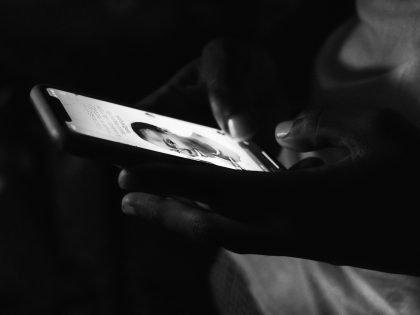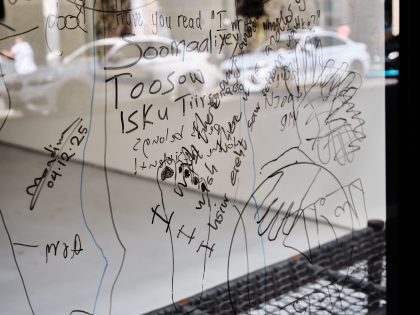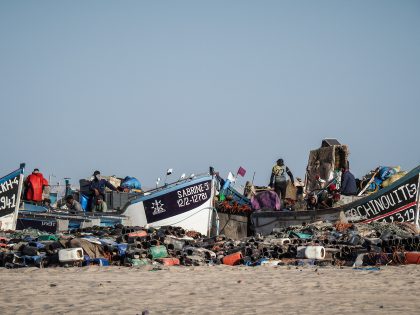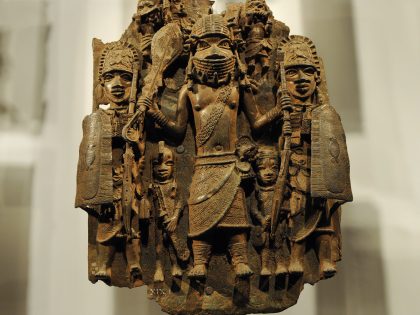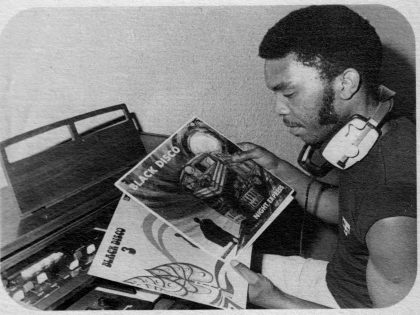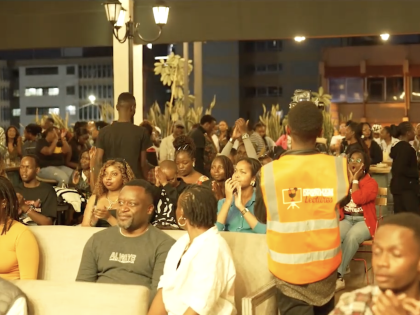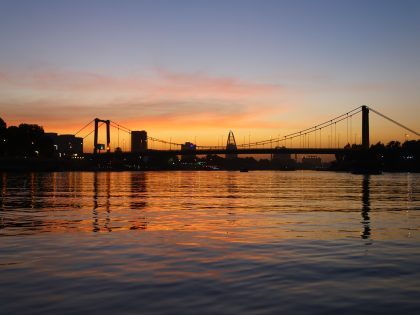Kampala Gets an Art Biennale
The need to move the art discussion away from Darwinian interests in gorillas to the concern for new audiences for contemporary art in Africa.

Image: Kampala Art Biennale.
Billed erroneously in a local Ugandan newspaper as Africa’s first contemporary art biennale, the Kampala Art Biennale opened on 1 August showing mostly paintings of 45 artists from 13 African countries. Its main exhibition venues were the historical Uganda Museum, as well as the Makerere Art Gallery, and Nommo Gallery. The biennale capitalized on marketing itself as the first biennale on the African continent, though this is clearly incorrect (Dakar, Douala, Cape Town, Bamako, Johannesburg and Lubumbashi biennales, anyone?).
Stephen Asiimwe, the CEO of the Uganda Tourism Board, made this erroneous assumption during a speech he gave at the exhibition press conference in July. But I later heard this same rhetoric in biennale director Daudi Karungi’s opening speech, claiming the biennale to be the first of its kind. Though people in the art scene would have been skeptical, this grandstanding played well on the ignorance of the local audience and the tourism partners.
The 2014 Kampala Art Biennale had odd echoes of the long term effects of mandating that Ugandan art somehow connect itself to foreign investors–and, in fact, ensure that foreign investors’ aesthetic and subject matter interests are reflected.
This practice is connected to one of Ugandan president Yoweri Museveni’s creative moments: during a tour of Vienna in 1992, Museveni declared it an opportune moment for (Ugandans) to portray, through paintings, a promising picture of the new Uganda. He understood, at the time, the power of art in representing Africa to the world, especially through the work of then-internationally renowned Ugandan sculptor Francis Nnaggenda, whose modern and experimental aesthetic introduced foreign audiences to the histories of Uganda through its contemporary art. Museveni’s declaration came after he signed the Investment Code Act of 1991, which sought to make favorable conditions for foreign investors. In particular, he was on the prowl for Austrian investors, and even more so, Austrian art collectors. This desire to attract foreign buyers had the most unfortunate consequences in the following decade: Ugandan art quickly became simplistic, colorful, and exotic for the tourist market. Following Museveni’s investment policy, tourist art would quickly overshadow the depth and richness of an already established Ugandan contemporary art scene, among which was Makerere University’s Margaret Trowell School of Industrial and Fine Art, a hub for contemporary art practice throughout East Africa since the 1950s.
In establishing the 2014 Kampala Art Biennale to represent the “current status of Africa” through visual art, the curators Henry Mzili Mujunga and Daudi Karungi’s choices reflect the long after-effects of president Museveni’s decision to marry art and commercial interests. Although the Kampala Biennale’s theme promised to reference the debates about what it means to live and produce art in a modern and ‘progressive Africa’, it still showed the deep effects of Museveni’s investment manifesto: today, in 2014, the exhibition told the grand narrative not of Austrian investment, but of Chinese and American investment in regional and local markets.
To begin with, one sweeping glance across the hall told me that contemporary art was not the focus at the Uganda Museum. Light beaming down from German architect Ernst May’s atrium created a celestial atmosphere in the room. A sideboard held the archaeological display titled ‘Ancestors’. Here one found Lucy, the 1.5 million year old fossil skull, staring from behind the glass frame. In this environment was a panel discussion that uncomfortably juxtaposed art, culture, and tourism.
At the central showcase in the Uganda Museum, the viewer was rendered incapable of tracing a particular genre or style or movement in the exhibition. The more complex work was subsumed by the more obviously “colorful” and exotic. Ideas of ‘progress’ were captured in works by Kenyan painters Michael Soi and Samuel Githui for whom foreign investment in Africa is a battlefield. Githui’s “Bullfight” depicts two bulls facing off amidst a cheering crowd symbolizing the investor neocolonialism of America and China in Kenya. Soi’s “China Loves Africa” depicts Chinese businessmen drinking oil from long straws penetrating into Africa’s heart.
The poetic documentary photography of Malian artist Harandane Dicko, and the striking woodcuts by Ethiopian artist Yonas Melesu had nearly disappeared into the background. When I asked filmmaker Mira Nair who attended the opening what her favorite work in the show was, she mentioned Melesu’s woodcuts. I strained my eyes to find the work, which appeared at the threshold of the exhibition hall. Its near A3 size and subtle brown receded further into the wall next to Soi’s exotic, and rather simplistic “China Loves Africa”. Similarly, the exhibition’s grand narrative of employing art for economic development swallowed up the significance of the context in which Ugandan artist Babirye Leila produced burnt found sculptures: they were made during the passing of the Anti-Homosexuality Bill in February. However, the psychological trauma inherent within Leila’s work’s was relegated to the everyday issues of corruption and a failing education system in postcolonial Uganda.
Rather than highlighting African artists’ own ability to produce work that reflected their own contextualised, nuanced aesthetics, the art practices and personal backgrounds of the artists showcased in the exhibition were swallowed up by the machine of exoticism, tourism, and nationalist sentiment. As I walked about this biennale, all I could think of was the Nigerian critic and curator Olabisi Silva’s words on the challenges of curating contemporary art in an international context in 1995: “the distinctive development of each artist is denied, as is any proper debate within the context of wider international art practices.”
During some of the panel discussions, it became clear that governmental funding without strings attached, and the need to groom a local art audience were foremost on everyone’s minds. Biennale curator Henry Mzili Mujunga relayed his vision of a contemporary art museum in Uganda and the need for governmental art support to the Minister of Tourism, who was sitting in the audience. Of course, all this happened before there was a clash between the proponents of art and the promoters of tourism in a heated, though often hilarious, exchange between the panelists. Oddly, gorilla tracking fees actually came up during a debate about the cost of contemporary African art – (I was dumbfounded, specifically, by a panelist’s comparison of an El Anatsui woven metal piece and the odd 600 USD gorilla tracking fee in a Southern Uganda impenetrable forest) – this, in its own way, made it worthwhile to attend a biennale in Uganda. While the emphasis of the Kampala biennale was all about ensuring that African artists are able create what the view from Africa looks like for the tourist market, evident in the Uganda Museum environment was the need to move the art discussion away from Darwinian interests in gorillas to the concern for new audiences for contemporary art in Africa.

